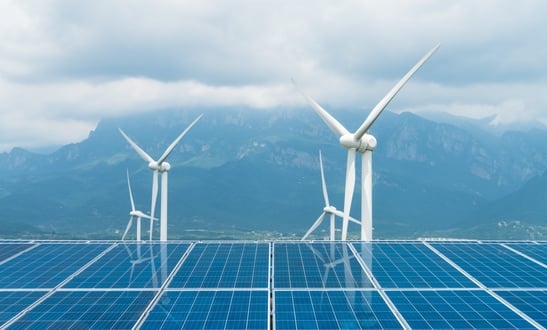If you are carrying out wholesale lending, it is important for your risk profile and your firm's ESG strategy to evaluate the green credentials of your potential borrowers at the start of the lending process.
Reasons for this include:
- Investor interest
As consumers and investors become more environmentally conscious, there is an increasing demand for companies to. demonstrate their commitment to sustainable practices. - Risk management
Impacts of climate change can pose significant financial risks to companies. Lenders should identify potential environmental liabilities, regulatory non-compliance and other risks associated with environmental performance of their borrower. - Reputation management
Companies with poor environmental performance can face negative publicity and damage to their brand.
Additionally, banks need to gauge the speed at which climate risks could materialise and how they’re connected and concentrated in their balance sheet. Assessing green credentials of borrowers will enable banks to develop more accurate risk scenarios and effective mitigation plans.
Framework
Our expert framework can help you assess your potential borrower at origination and thereafter through the lifecycle.

In order to get relevant and material climate-related information on the borrowers’ financial condition and facility characteristics, the firm’s credit officers need to evaluate the environmental, social, and governance (ESG) risks and opportunities for the borrowing entity.
Use this checklist to aid you in assessing the green credentials of a potential borrower:
- Applicability:
As part of your onboarding checklist, new prospective clients should be checked against the industry code that is in scope of climate risk (follow EU taxonomy approach). Ideally, expand the KYC (Know Your Customer) process to gather your client’s sustainability data at this stage. - Review the borrower's sustainability report:
Many companies now produce sustainability reports that detail their environmental and social impact, as well as their efforts to reduce their carbon footprint. - Evaluate the borrower's environmental management practices:
This includes their energy efficiency, waste management and water conservation efforts. Consider factors such as whether they have a comprehensive environmental management system in place, whether they have set targets for reducing their carbon emissions and whether they have achieved any environmental certifications. - Assess the borrower's supply chain:
Consider the borrower's supply chain and evaluate the environmental and social risks associated with their suppliers including assessing whether the borrower has policies in place to monitor and address supply chain risks. - Consider the borrower's reputation:
Evaluate the borrower's reputation in the industry and their track record with environmental and social issues (media coverage, regulatory violations or fines and evaluating any partnerships with environmental organisations) - Use ESG rating tools:
Third party ESG rating tools can help you evaluate green credentials more objectively and provide a standardised way to compare borrowers. Some popular ESG risk assessment tools include RepRisk and Trucost.
How do I address greenwashing claims?
FCA is focused on developing a tool or solution to address the risks of greenwashing in financial services and strengthen consumer confidence in investment products with ESG features. All interested UK-based firms are invited to participate, which will be hosted on the FCA’s Digital Sandbox and will feature international regulators, firms, innovators, and leading voices on sustainable finance. greenwashing.

How can you improve your current monitoring and portfolio maintenance process?
- Create early warning climate risk indicators and monitor and assess the indicators during trigger events or annual reviews. Some of the negative externalities need monitoring at a portfolio level.
- Perform a comparative industry and sector analysis in view of transition risk. As climate risk may aggregate over time across portfolios, e.g. in the automotive sector combine wholesale exposure to manufacturers, distributors, captive finance companies, and retail business exposure to fleet leasing, car loans, etc. Second order risk is also important, e.g. auto exposure plus upstream exposure to oil producers, or refiners.
- Analyse scenario(s) required to determine the impact of the financial risks from climate change on the overall risk profile, appetite, and business strategy. The scope of the scenario will decide where it will help (e.g. improving disclosures, improved portfolio construction) and evaluate if change in risk management is needed, change in underwriting or pricing practice or even a change in organisational strategy.
- Establish an assurance program for the end-to-end lending process.
- Create any missing controls (that can modify the likelihood/impact of risk) that were identified through point 4.
Controls could be preventive, detective or reactive – for example, exception reporting is a detective control
6. Build a scorecard on new climate risk key controls – this will help you provide information on how well you are doing on the improved practice and ability to mitigate the unknown.
7. Achieve incremental change through the feedback mechanism by applying the above suggestions.

From a regulatory perspective, climate risk assessment is explicitly incorporated into the risk identification process as well as the risk appetite statement and cascaded down to the lines of the business. As with all risk(s), primary responsibility should lie with the first line of defence, with risk being second line.
The three lines of defence should be enabled to better evaluate the environmental impact of lending decisions and make well informed decisions that align with the bank's sustainability goals. A key consideration is clarity in tasks and roles across the three lines of defence.
In summary:
First Line
• Carry out initial climate risk assessment when onboarding clients or during periodic review of existing clients
• Engage with clients to understand carbon intensities and their business plans for mitigating climate risk
• Understand, assess and consider uncertainties and developments around timing and channels of climate risk
Second Line
• Set-up and own central risk frameworks
• Develop the tools for identifying and assessing climate risks
• Deliver climate risk training
• Develop scenarios and undertake stress testing
• Support first line activity to understand, assess and consider uncertainties and developments around timing and channels of climate risk
Third Line
• Review control design and execution
How can NextWave help you?
NextWave can help you set a strategy for growth acceleration by:
- Reviewing your current process and creating a target state with a plan to close the identified gaps
- Creating an actionable plan to streamline your business process for efficiency and/or automation of the ESG process
- Assessing potential ESG vendors and advising on the most appropriate solution for your business
- Bringing in change management and SME capability to support implementation of new systems and policies

May 17, 2023



